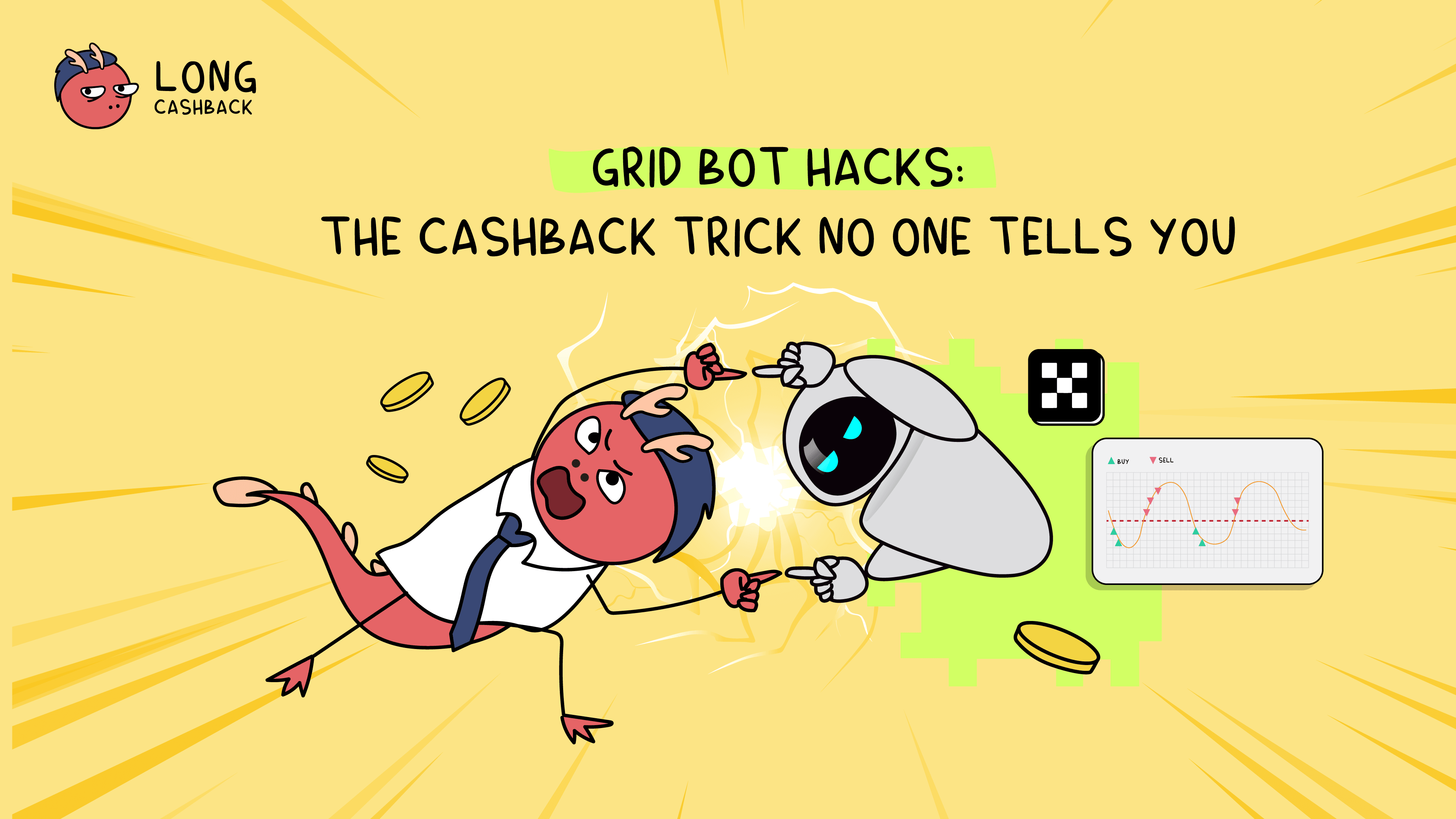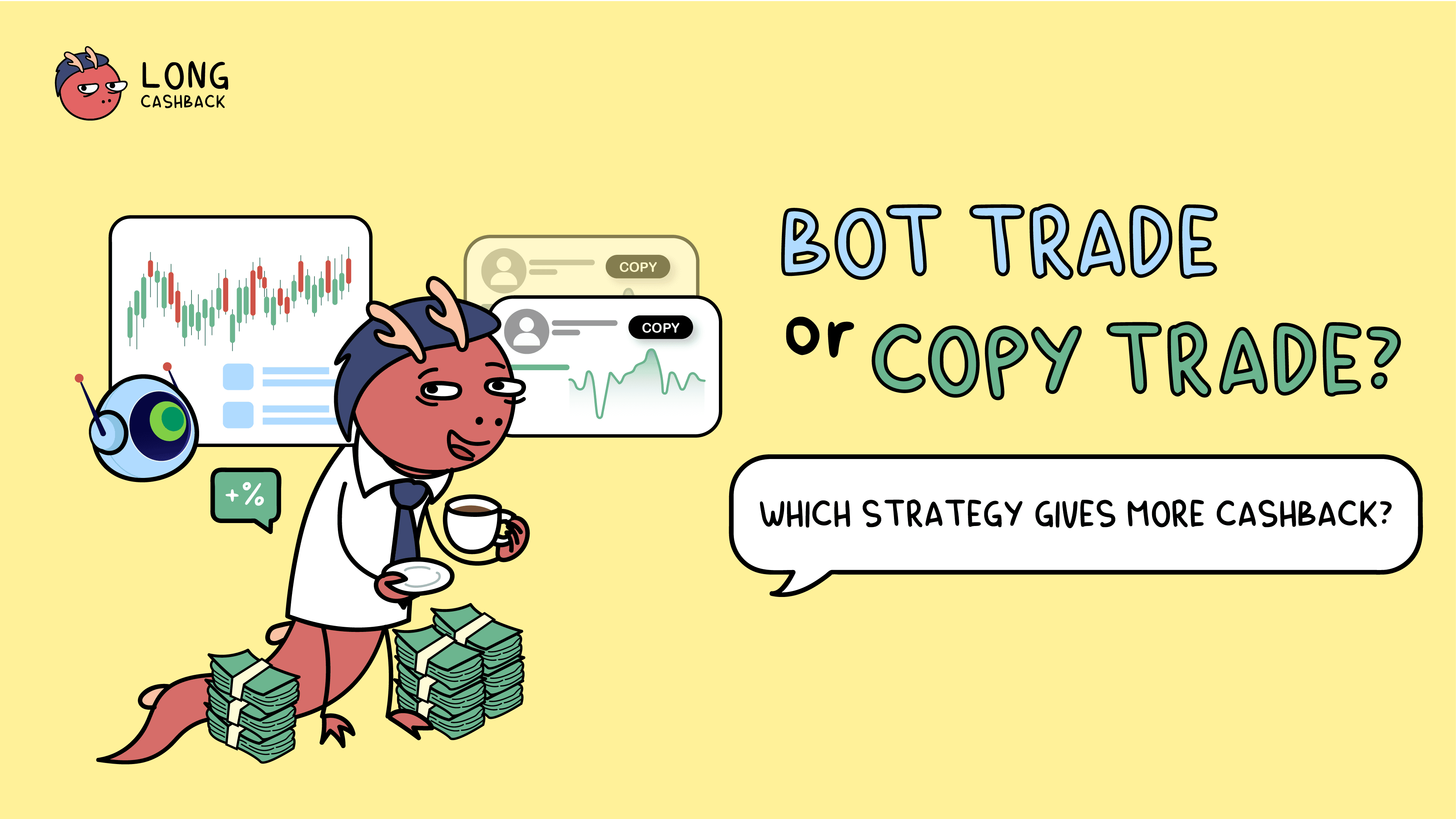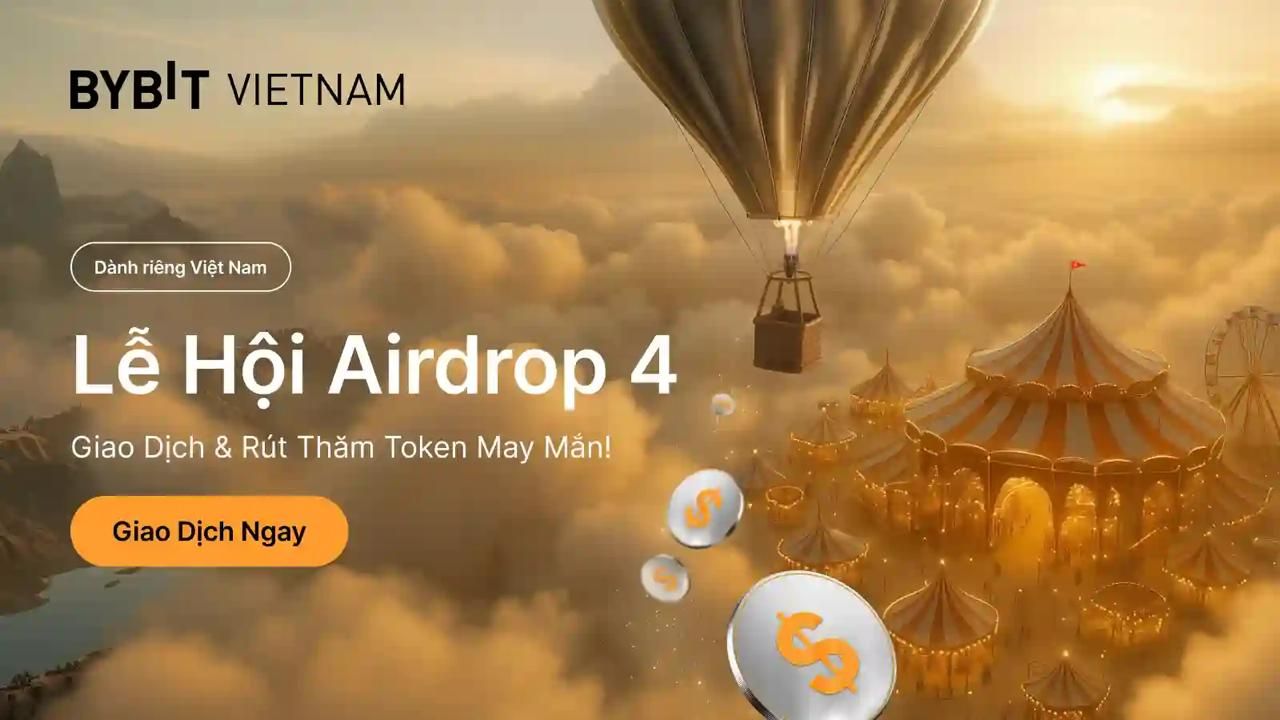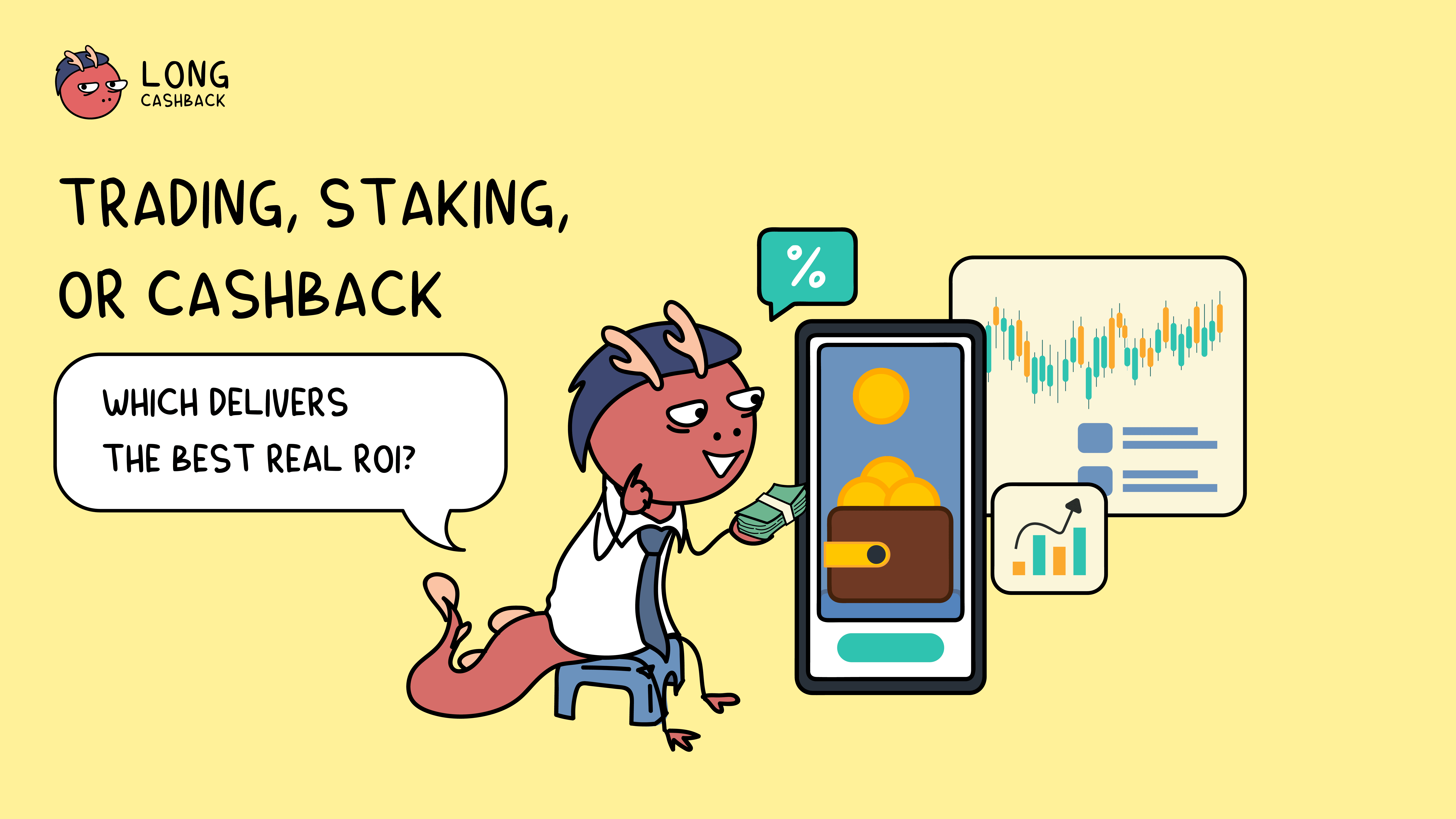Grid trading (using bots) has become a favorite strategy for many traders because it can generate profit in sideways markets and take advantage of small price fluctuations. But if you only look at the “farm” profit from grids and ignore the cashback on trading fees, you’re leaving a significant portion of your earnings on the table.
This article explains how to combine farm profit from OKX Grid Bot with hefty cashback — with deep analysis, real examples, and the risks you need to watch out for.
1. Overview: Why combine Grid Bot and cashback?
The Grid Bot generates profit from buy-sell spreads within a set price range (grid). It creates revenue continuously when the market fluctuates within that range.
Cashback gives you back part of your trading fees — a direct saving that goes straight into your PnL.
When you combine both: you earn from grids while reducing costs through cashback → net ROI improves significantly without adding extra market risk.
In short:
Cut “fixed costs” (fees) + boost “small profit streams” (grid profit) = stronger and more sustainable returns.
2. Why choose OKX Grid Bot?
Among today’s CEXs, OKX stands out as one of the best choices for traders who want to use Grid Bots, thanks to these advantages:
- Built-in, free on the platform
No need for third-party apps or complex APIs. OKX’s Grid Bot runs directly in the official web/app interface, reducing security risks and setup costs. - Supports both Spot and Futures
Unlike many exchanges that only allow spot grids, OKX also supports futures grids, giving more opportunities for leveraged trading or hedging. - Competitive fees + attractive cashback
Maker fees on OKX are already low compared to other top CEXs. Combined with cashback programs offering 20–50% (e.g. via Lóng Cashback), your transaction costs are reduced to the bare minimum. - Backtest tools & AI strategies
OKX provides backtesting data and AI-based parameter suggestions, making it easier for beginners to configure bots. - Deep liquidity & wide range of pairs
As a top 3 exchange by volume, OKX ensures grids execute quickly with tight spreads, minimizing risk in volatile markets. - Easy bot management
The OKX dashboard lets you monitor multiple bots at once, check PnL, fees, and execution ratio — convenient for optimizing strategies.
Bottom line: OKX’s Grid Bot combines ease of use, low fees, generous cashback (50% via Lóng Cashback), and strong infrastructure. A solid option for traders looking to farm profit and optimize costs at the same time.
3. Key things to know about OKX Grid Bot
Before diving into combined strategies, it’s important to understand some technical basics:
- How it works: the bot places buy orders at lower levels and sell orders at higher levels within the grid. Each filled order locks in small profits.
- Key parameters:
- Upper / Lower bound (grid range)
- Number of grids (the more grids, the smaller each step, the higher execution frequency)
- Investment size (capital allocated to the bot)
- Take profit per grid (profit per step)
- Costs: maker/taker fees apply for each order. Limit orders (maker) are usually cheaper and may even earn rebates.
The takeaway: Grid strategies are most effective when volatility and spreads allow frequent fills. Transaction fees directly impact profit margins.
4. Cashback mechanics you need to know
- Based on actual fees paid: some cashback programs return a % of your fees (e.g. Lóng Cashback offers 50%). If you mostly use limit maker orders, effective fees can drop very low.
- Payout timing: usually daily/weekly/monthly — consistent payout makes ROI easier to track.
- Payout form: stablecoins / fiat (VND) / exchange tokens. Stablecoin payouts are most practical for accurate PnL accounting.
- Activation required: usually you must register via a specific referral link or activate cashback in the platform/partner dashboard.
5. Practical strategy: configuring OKX Grid Bot to optimize farm + cashback
A. Choosing pairs
- Favor pairs with moderate volatility (BTC/USDT, ETH/USDT). Too volatile → higher risk of stop-outs; too flat → few fills.
- Check volume & spread: deep liquidity reduces slippage.
B. Setting up grids (step by step)
- Define upper/lower bounds based on recent ranges (e.g. 30-day support/resistance).
- Number of grids: 50–100 for medium volatility if capital allows. Fewer grids if capital is smaller.
- Capital allocation: use only 10–30% of total capital per bot. Don’t go all-in.
- Use limit orders: aim to act as maker to enjoy lower fees + rebates.
- Stop/Pause rules: set conditions to stop if the price breaks out strongly; use trailing stops if needed.
C. Integrating cashback
- Activate cashback (e.g. via OKX referral through Lóng Cashback) before launching the bot.
- Verify your account is linked correctly.
- Track payouts regularly to compare fees paid vs cashback received.
6. Example calculation (illustration only)
Say:
- You run a BTC/USDT grid with $5,000 capital.
- The bot executes 60 trades in a month.
- Maker fee = 0.04%, taker fee = 0.10%.
- Lóng Cashback refunds 50% of trading fees.
If 90% of your trades are maker orders, your effective fee load drops significantly after cashback, meaning higher net profit.
👉 The best way: run a 30-day test, export fee and rebate data, and compare gross grid profit vs net profit after cashback.
7. Pro tips for optimization
- Maximize maker share: configure bots to use limit orders, avoid market orders.
- Consolidate volume: focus on fewer pairs/exchanges to reach VIP tiers or higher cashback levels.
- Track payout schedules: align with cashback reports for accounting/tax.
- Diversify pairs & timeframes: run multiple smaller bots across pairs to reduce risk.
- Use backtests: simulate with historical data to estimate execution and fees.
8. Risks to watch out for
- Strong breakouts: Grid works best in sideways markets. In strong trends, bots may buy high, sell low → losses. Always set stops.
- Unexpected fees: If too many orders execute as takers, fees can eat into profit. Monitor maker/taker ratio.
- Wash trading policies: Avoid triggering anti-abuse rules on rebates.
- Taxes: cashback may count as taxable income. Keep records.
- Liquidity risk: low-volume pairs can cause slippage that wipes out gains.
9. Short case study: a simple test
Run two identical bots on OKX:
- Bot A: with cashback activated.
- Bot B: without cashback.
After 30 days, compare Net PnL:
- Net A = Gross A – Fees A + Cashback
- Net B = Gross B – Fees B
Result: Bot A consistently shows better net performance if cashback + maker ratio are maintained.
10. About Lóng Cashback
For traders who want practical “money back”:
- Pays in stablecoins monthly (easy to value and use).
- Supports multiple major CEXs, with market-leading rates (50% for 6 big exchanges).
- No staking or holding platform tokens required.
- Real cash flow to manage PnL.
- 24/7 support if issues arise.
11. Conclusion: Farm profit + cashback = solid formula
Combining OKX Grid Bot with a cashback program is a simple but powerful strategy:
You capture frequent small profits from grids while cashback cuts transaction costs. The result is improved net ROI — without taking on more market risk.




